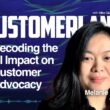Former-Borscht Belt comedian, 1950’s TV script writer, filmmaker, and philosopher, Mel Brooks, cautioned, “Hope for the best. Expect the worst. Life is a play, we’re unrehearsed.” And, while there are generally no guarantees of success in any endeavor – showbiz or branding, movies or marketing – you don’t have to go in “unrehearsed.”
There are basic strategies, tactics, and best practices that can help you rehearse for the marketing part you have to play. Here are ten acts (with links to some “line notes”) which – if performed well – will significantly increase your chances of a boffo brand performance:
- Research: This is #1 for a reason. Thorough market and brand research will help you to understand your target audience, their needs, preferences, pain points, motivations, and expectations. Nobody that actually expects a successful venture goes into it on gut. Research insights are vital particularly for crafting brands that best meet consumers’ expectations.
Here’s the thing. Every year research seems to move further and further away from brand insights. Numbers of social network followers and Net Promoter Scores aren’t a substitute for real research. Particularly when it comes to staging your brand.
- Clear and Compelling Brand Vision and Purpose: Define that for your brand, including mission, values, and long-term goals. Understand what the brand stands for in the mind of the consumer and it will motivate decision-making, encourage customer engagement, and delineate differentiation (See #3).
This is not as easily done as written, even with a #2 next to it. Marketers have consistently flubbed their brand “lines,” focusing more on media and social networking optimization. Which is why commercials look more and more like mini-movies, entertaining to watch, yes, but engaging from a brand perspective, not so much. How many times have you said/thought, “Wow! That was funny/interesting/poignant. What was it for?” Yeah, me too.
- Differentiation: Identify what sets the brand apart from its competitors. Offering something competitors cannot easily replicate is going to be more emotional than rational for consumers today. Most marketers miss the emotional ones (some of the rational ones too) which is why #1 is a critical first act.
- Consistent Brand Identity: You need one across all channels. Including a brand backdrop comprised of logo, colors, tagline, and messaging. Consistency builds brand recognition, trust, engagement, and loyalty among consumers. This stuff contributes to engagement and loyalty more than you think. For a brand like Apple, for example, upwards of 35%.
- Deliver Quality Products/Services: “Quality” is pretty much a given today. The Customer Satisfaction, Total Quality Movements, and ISO 9000 programs guaranteed today’s products and services are mostly “right” and pretty much the same (See #3). The age of brand ubiquity arrived in 1992 and nearly every brand “satisfies” when it comes to the rational, primacy-of-product aspects.
And anyway, satisfaction is a lagging-indicator. A measure of what consumers did last time. Still, you can’t risk giving consumers stuff that doesn’t meet the basic category requirements because today there are a gabillion alternative choices a consumer can make in a nanosecond.
- Customer Experience: Prioritize exceptional customer experiences at every touchpoint. This includes customer support, easy purchasing processes, post-purchase follow-ups, but mainly meeting expectations.
- Comprehensive Marketing Strategy: Develop a comprehensive marketing strategy that aligns with the target audience expectations and the brand’s vision. Oh, and is innovative. Utilize a mix of online and offline channels to reach potential customers effectively (See #’s 1-6).
- Social Media Presence: Leverage social media platforms to engage with the audience, build a community, and showcase the brand’s personality. Social media can be a powerful tool for creating brand awareness, customer engagement, and positive brand behavior.
But here’s your prime directive: Don’t forget “brand” is the prime directive (See #2). Also, here’s what happens when all you do is count the number of followers someone has and don’t anticipate brand outcomes (See #’s 1 & 2).
- Adaptability: Stay agile and adaptable to market variations and shifts in customer expectations, while you side-step cultural and political pitfalls. Consumer “delight” fast turns to “expectation,” so brands that can evolve and respond, first to what the customer really expects and, secondarily, to trends and market challenges, have a better chance of long-term success.
- Re-measure, Analyze, and Re-Calibrate: Continuously monitor and analyze your brand when it comes to meeting expectations (and what that expectations actually are) and key performance metrics to assess and track the brand’s progress. Use leading-indicator, loyalty-based, data-driven consumer insights to make informed decisions and optimize strategies (See #7).
Remember, building a successful brand takes time, effort, insights and dedication.
It’s crucial to stay committed to the brand’s values and consistently work towards meeting customer needs and expectations. Success is almost never immediate, and requires ongoing effort, adaptability, and a customer-centric approach that captures the true voice of the consumer.
If it helps keep these ten tenets of success in mind, think about this: Over his career Mr. Brooks has won an Academy Award, four Emmys, three Tonys, three Grammys, and has been nominated for six Golden Globes and one BAFTA Award. He’s one of only fifteen people who have an EGOT (Emmy, Grammy, Oscar and Tony).
With that level of success in mind, here’s another of his beliefs: “I don’t believe in the business of being behind, better to be in front.”
For your brand too. A lot better.
Photo by Hulki Okan Tabak on Unsplash













